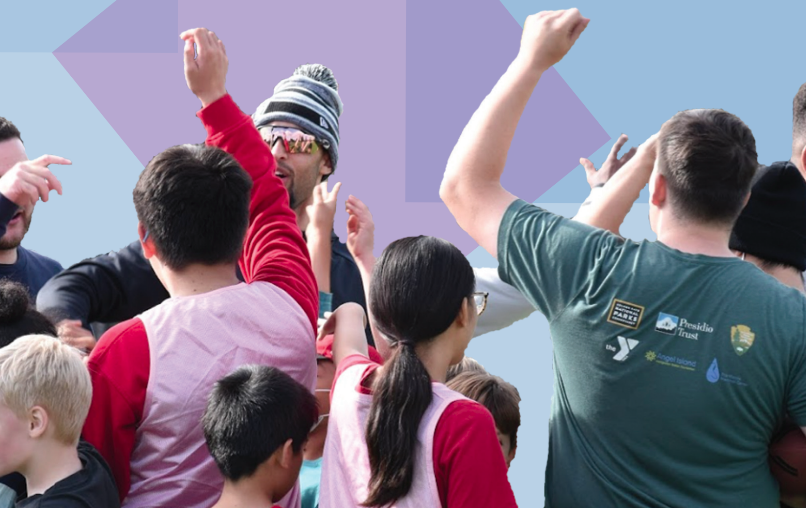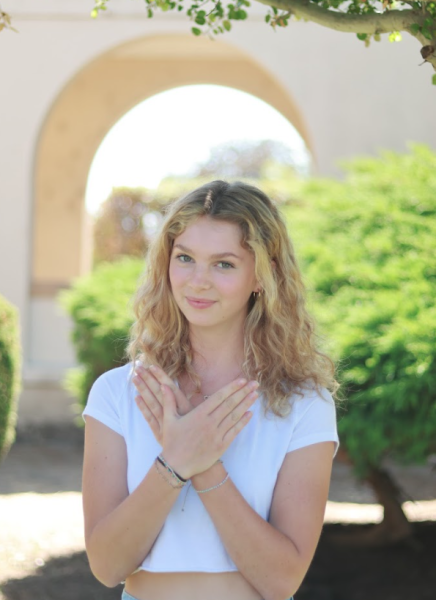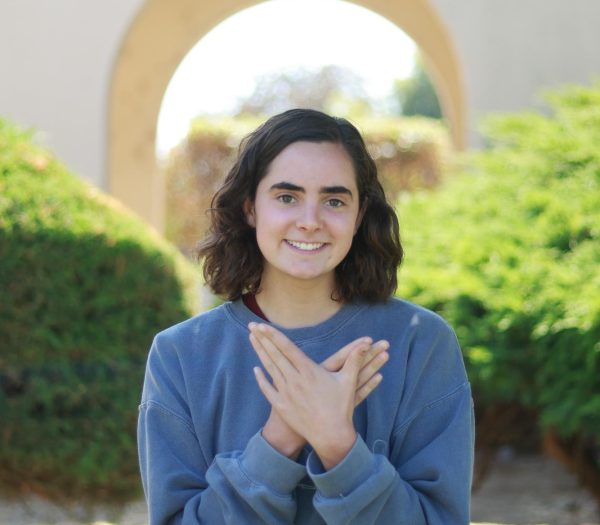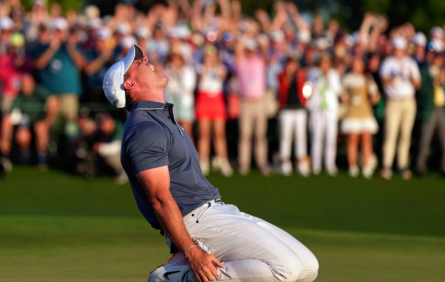Pioneering Progress
E-Sports provides inclusive environments for athletes with disabilities. Photo courtesy of Stephanie Koo.
March 31, 2023
Two weeks before Mauricio Porcayo’s graduation from Bassett High School in Avocado Heights in Southern California, he was hit by a drunk driver. Doctors were able to save Porcayo’s right leg, but his left had to be amputated below the knee. For a while after this horrible accident, Porcayo anguished that he would never be able to play soccer again, which had been his passion from a young age.
“I was at my lowest point,” Porcayo said. “Hearing the news that you’re going to get your leg amputated, you believe that’s it: there’s no more chance of you be[ing] an athlete.”
But despite these fears of never being able to participate again, Porcayo would find another opportunity to play: in the sport of amputee soccer.
“When the coaches came out from the United States Amputee Team to let me know that there’s still soccer even after amputation, it really lifted up my hopes and happiness,” he said.
In the same way that soccer is an integral part of Porcayo’s life, athletics inhabit a fundamental role in the happiness of billions of others worldwide. Elite athletes are hailed as heroes and celebrities across the globe, and their incredible accomplishments become legends to their adoring fans.
But time and time again, a group of athletes is overlooked, not given opportunities, or passed over by media and fans alike. Disabled individuals suffer from a fundamental lack of appreciation and lauding for their athletic accomplishments, especially by the mainstream press.
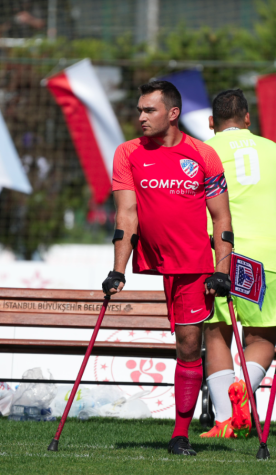
According to the World Health Organization, one in six people worldwide experience a significant disability — whether from an accident, like Porcayo, or from birth. Millions of these people are athletes.
Having a disability often means having to work harder to advance in one’s area of expertise compared to others who are able-bodied. Many of the accomplishments of athletes with disabilities are overshadowed both in and out of media in favor of giving attention to their able bodied competitors. Thus, it’s time to shine a light on the incredible accomplishments these elite athletes have achieved, discuss the ways they must adapt in order to play their sports, and share ideas on how to increase awareness and accessibility.
Porcayo’s love of soccer is shared by Nico Calabria, the 12-year captain of the United States Amputee Soccer Team. He was born with only his left leg, and has been playing amputee soccer on the world stage since he was 16. At only 13, he raised over 100,000 dollars for charity when he climbed Mt. Kilimanjaro, a volcano in Tanzania that is roughly 20,000 ft high. He first began playing soccer from a young age.
“I just love soccer,” Calabria said. “I played with my friends. [I knew] this is what I want to be doing. … It definitely helped me build community and it also prepared me to be one of the best amputee soccer players in the world.”
His assertion of “best in the world” is no exaggeration. Calabria is the all-time leading goal scorer for the USA and was a Golden Boot runner up in the 2022 Amputee World Cup, meaning he was the second highest scorer in the entire tournament.
Beyond his immense skill in the sport, Calabria has a passion for bringing amputee soccer to others, like Porcayo.
“When [amputees] have an opportunity to play again, … it’s a truly electrifying experience,” Calabria said. “That’s really what it’s all about: just making sure that anyone who wants to play is able to and has the resources to do so.”
Calabria first began playing in international amputee soccer matches when he was 16, but at that time, there were few opportunities for him to compete.
“Originally, it was actually quite frustrating because there wasn’t a program really going in the United States,” Calabria said. “You had to pay to play, [games] were few and far between. They were very spread out geographically and it didn’t really feel like there was much momentum building.”
Because of this, Calabria worked to advocate for the sports growth and recently, amputee soccer has started gaining momentum in the US.
“In the last four or five years, I’ve really dedicated a lot more time to it and the organization [of USA Amputee Soccer] has grown to the point where we can support athletes’ costs to play, and there’s just more regular competition going on,” he said.
Currently, he is in the process of founding a team in Los Angeles, where Porcayo is a player.
“Having access to the sport is amazing,” Porcayo said. “But there still are … a lot of amputees that don’t know about the sport, and [raising awareness is] what we’re trying to do.”
Awareness is hugely important in helping people with disabilities increase access to athletics. Many aren’t aware of organizations near them and therefore are denied these opportunities to participate.
The biggest event for athletes with disabilities is the Paralympic Games, which helps to raise awareness and promote inclusivity for all athletes. The Paralympic Games
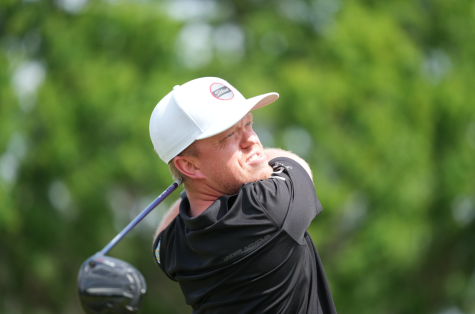
are the Olympic Games competition for athletes with disabilities.
They are held in tandem with the Olympic games, and in recent years, viewership of the games has increased. According to news service Freshered, the Rio 2016 Paralympic Games counted about 4.1 billion viewers globally, a significant increase from London 2012, which counted 3.8 billion. This is great news, as the showcase of the skills of these elite athletes will help to decrease stigma and raise warranted appreciation for athletes with disabilities.
Paralympic athletes compete in six categories: amputee, cerebral palsy, visual impairment, spinal cord injuries, intellectual disability, and “les autres” (athletes whose disability does not fit into one of the other categories, including people of short stature).
Many of the aforementioned categories are for athletes with physical disabilities, like the soccer players Porcayo and Calabria.
Swedish golfer Joakim Björkman is another great example of a remarkable athlete with a physical disability. He holds a career-high ranking of third in the world for golfers with disabilities, and is winner of 35 worldwide titles for golfers with disabilities, including (but not limited to) Swedish Champion in 2016, four-time Italian Open Champion, and European Champion 2006.
Despite this success, his journey towards becoming an elite athlete has not been without difficulties.
Born with achondroplasia, Björkman faced teasing, staring and anxiety because of his short stature. Due to this constant tormenting, golf became an escape for him.
“You had the comments,” Björkman said. “You had the eyes. You didn’t push back. You just kept it inside. And then when I was 17, everything was falling apart because of that. But I’m very lucky that I had the game of golf at that time. I had freedom to do whatever I wanted to do on the course.”
As soon as he began playing golf around age 11, he signed up for a golf school and then quickly advanced in skill. In golf, all players measure their ability with a number called a handicap. The lower the handicap, the better the player. Björkman’s first official handicap was a 54, and only four months later he was down to a 15.
“Starting in that school, … I knew it was this kind of sport that I was supposed to do,” he said.
Björkman plays in both golf tournaments for those with disabilities and also ‘normal’ ability golf tournaments, in a ratio of about one-to-one. Playing in the more mainstream tournaments makes a big difference in awareness and accessibility.
“Competing in the biggest stage and … the biggest tournaments is when you create more exposure, in a good way,” he said.
Björkman sees that it makes waves and helps to change people’s perspectives.
“I compete on that stage, and it’s like you’re shaking up the world and [people see] ‘whoa, you can do something big,’” he said.
With the impact golf has made on his life, Björkman encourages others with disabilities to try a sport, even if they feel trepidation.
“Because everyone will be feeling fearful, nervous, unsure,” he said. “Actually, that’s the first sign that you are ready. You have to accept that and when you do… you start to see what you’re capable of.”
Like Björkman said, it can be intimidating to start a new sport, whether you have a disability or not. But here in the Bay Area, there are organizations dedicated to helping athletes with physical disabilities start a sport.
The Bay Area Outreach and Recreation Program (BORP) is one such organization. BORP works to create a supportive, fun and active community for adults and youth with physical disabilities and visual impairments.
BORP offers a variety of team activities and sports for adults and kids. Some of these include: wheelchair basketball, sled hockey, goalball, power soccer, adaptive cycling and other outdoor activities. The goal of these programs is to allow kids the opportunity for fun and competitive interactions while also learning new skills and making friends.
Sled hockey and youth basketball coach Trooper Johnson shares his experience with BORP and its mission.
“What we try to do is provide opportunities for people to be able to compete and participate with other people with disabilities in sports and recreation,” Johnson said. “We instruct programs that normally aren’t offered to them in kind of the general population or general communities that they’re in.”
BORP allows for kids and adults to socialize with others with common interests. These competitive sports, adventurous outings and aerobic exercises allow participants to feel safe and showcase their interests and talents in a positive way.
BORP aims to provide a community to alleviate stress as well. Just like Björkman described, many kids with disabilities face discrimination from society, which can cause anxiety and isolation. Sports can provide the same escape for them as it did for Björkman.
“I think that community is probably more important for kids with disabilities,” BORP coach Johnson said. “They’re kind of isolated in a lot of cases. They go through a lot of stuff that a lot of people just don’t really understand.”
Opportunities for people with disabilities to play sports are limited, but BORP works to create an accepting and inclusive environment for youth and adults with physical disabilities to thrive in.
As seen by the categories of the paralympic games, there are also individuals with intellectual developmental disabilities (IDD) who are also athletes. This includes people with Autism Spectrum Disorder, Down syndrome, and more.
In the Paralympics, it is challenging to earn a spot in the IDD categories because there are fewer sporting events open to them. In the Tokyo 2020 games, there were only three sports available for athletes with IDD: swimming, table tennis and athletics (which includes track and field events and road running events). Worse still, the Beijing 2022 winter games did not have any events for athletes with IDD at all.
Some athletes and their families are standing up against this lack of inclusion. Mikel Garcia, a Spanish runner with Down syndrome, was declared World Champion in 400m, 800m and 1500m at a competition in Brisbane, Australia in 2019. Garcia’s parents set up a petition asking for more inclusion at the Paralympics, which received more than 100,000 signatures.
Despite people with IDD having few opportunities to perform at the Paralympics, more and more people with IDD are getting involved with sports everyday.
One organization helping to introduce people with IDD to athletics is E-Sports. No, not online gaming, E-Sports stands for “Exceptional Sports” and provides united classes and programs for kids both with and without IDD all over the Bay Area.
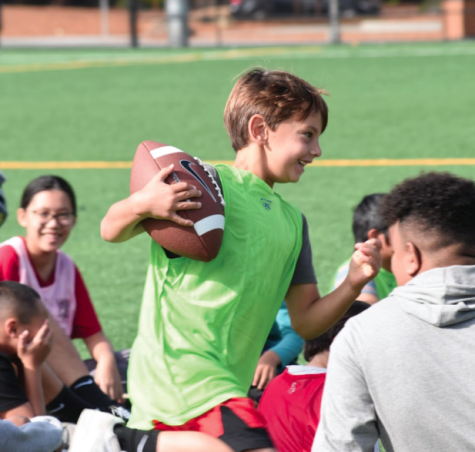
One E-Sports employee, Stephanie Koo, shared the goal of the organization.
“Our mission is that inclusion is more than in the classroom, it’s a lifestyle,” Koo said. “Inclusion … is something that can go beyond the classroom and to things that people love, whether it’s a hobby, or a life skill or just sports in general. But it’s about creating this friendship and bond between kids with typical needs and with special needs.”
E-Sports leads classes for kids and adults, both with and without IDD.
“It’s a lot of fun,” she said. “It’s a lot of high energy as well.”
It’s not always easy, but E-Sports makes sure to give each person individual attention.
“Sometimes there are kids that have a harder time with the activity, whether it’s that they’re just not feeling it that day or there’s something that’s over-sensory to them,” Koo said. ”We have a one-on-one volunteer coach that will take their time to sit aside with them and either play soccer or do some sort of a one-on-one drill with them — whatever they feel comfortable with — but getting to their level of their comfort.”
Koo feels that many kids with IDD don’t get the chance to participate in sports because they feel excluded.
“There’s a lot of times in neighborhoods or communities or other schools where a student who is not neurotypical will kind of get turned away, [and think] ‘I can’t join this activity or that sport becauseI don’t fit in, I don’t belong. Or I can’t,’” she said.
She believes that the best way to increase accessibility is with adaptation to the needs of different people.
“We should be finding ways to make something adaptable,” she said. “For a girl that I was working with, who had cerebral palsy [and was in a wheelchair], we went more towards an area that was more paved, rather than on grass…. The mindset [should] not be ‘oh, I can’t, so I won’t.’ It’s more like, ‘how can I? Let’s see if we can make this work.’ [It’s about] not being afraid to fail or try things that may not be status quo.”
The Paly community prides itself on our athletics. Our athletics program is a big part of our school, and many of our athletes also compete in sports outside of school. In addition, we also have athletes with IDD. Known as the Futures, there are two classes of students with (IDD) who are active members of our Paly community. These students are often seen on campus cheering at pep rallies, greeting friends on the quad and, of course, playing sports.
Through the AYSO VIP program, kids with IDD from Paly and all over the Bay Area, can play on the Green Giants soccer team. The team provides exercise, socialization and fun for people with IDD from kindergarten through college and beyond.
Paly’s own Maia McQuarrie has been a player on the Green Giants for five years, and she discussed the impact it has had on her life.
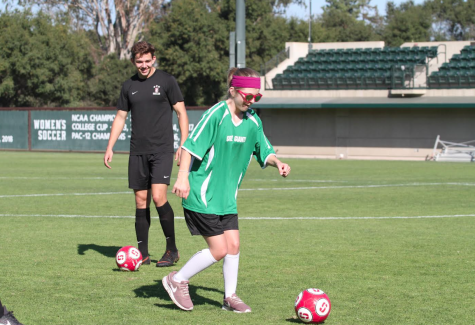
“Sometimes it can be tough,” she said. “But sometimes it’s awesome and pleasant and amazing. I love seeing my friends even when practice can be hard and you can be tired after your training.”
McQuarrie is a leader on her team, helping to bring confidence to players who are having trouble.
“I’ll say, ‘I’d be happy to help you know what to do if you’re nervous, or not sure if you want to do [soccer] anymore,’” McQuarrie said.
Her dad, David McQuarrie, is also a coach on the Green Giants, and commented on Maia’s attitude towards the game.
“She scores goals pretty often,” he said.”[She has] the biggest smile and jumps in the air with excitement, having scored.”
He notes on the importance of the sport to Maia, especially when she first started playing five years ago.
“[Maia was] just over the moon at being able to run and score goals and play with her friends,” he said.
One of the other coaches of the Green Giants, Malcolm Fleschner, spoke on the importance of soccer, and sports generally, to kids with IDD.
“Once you get that experience of dribbling a ball and scoring a goal, … you can see the enthusiasm,” Fleschner said. “And then some of these kids who were the most reluctant at the start then become the most enthusiastic, and that is always encouraging to me as a coach.”
The practices with the Green Giants are truly special. There are many fun drills, like Knights and Dragons, Pirate Ship or Coach Says (a version of Simon Says). Since the team has many athletes of many different abilities, it can be hard to manage the logistics of a practice.
“We do our best, with limited resources and coaches, to have everybody participate at the level that they are capable of participating at,” Fleschner said. “There are some kids for whom it is a real success for us to get them to even kick the ball at all. And then there are other kids who play a much higher level of skill, and so we try to facilitate games where we allow for that whole range to feel like they’re fully participating to the best of their ability.”
Because of the large skill range, the team relies heavily on volunteers to run their practices. However, they are usually short on volunteers to lend a helping hand. If you need volunteer hours, love soccer or inclusion, or all three, volunteering with the Green Giants can be a great way to spend a fun afternoon.
McQuarrie, one of the players, loves meeting new volunteers.
“[I feel] excited, proud and happy that they’re gonna do the Green Giants with us,” she said.
One of the biggest traditions for the Green Giants soccer team is their annual match against the Stanford Men’s soccer team.
“The coach of the Stanford men’s team, Jeremy Gunn, is very open and welcoming,” Fleschner said. “And the players are terrific and they just do a great job.”
The Green Giants have been undefeated against Stanford for ten years running.
“Yeah, sometimes it comes down to penalties,” Fleschner admitted. “But it’s been good for [Stanford] because on three separate occasions, we beat them, and then they went on to win the NCAA championship, so [losing to the Green Giants] was a good warm up for that. Maybe a little wake up call for them.”
But these victories are bigger than just a win. It is also about spreading awareness.
“We really appreciate playing with the Stanford men’s team because it’s not just about humiliating them,” Fleschner said. “That’s like 70% of it.” He laughs. “No, it’s about letting people who are in mainstream athletics know that this world exists.”
Fleschner believes that once more people are aware of athletes with IDD, more people will become involved.
“How well people are aware of the sporting world and special needs community is probably generally pretty low,” he said. “So once they become aware of it, they may want to … to participate as volunteers or help out in any way. I think that just becoming more informed is helpful.”
Most athletes and coaches agree that raising awareness is a big deal to increase inclusion.
Porcayo feels that exposing sports fans to the achievements of athletes with disabilities is a great way to raise awareness. One victory in this sense was the winner of the Puska Award for Best Goal of the year at Fifa’s awards this year. Marcin Olesky, a Polish amputee soccer player, beat competitors like Kylian Mbappe and Dimitri Payet for the final title of Best Goal of the year.
“Having that [title] shows abled people and disabled people that anything is possible,” Porcayo said.
Not only to Porcayo, but also to Calabria, awareness is crucial to growing the sport and appreciation of it.
“Awareness and advocacy goes a long way for building on the grassroots level,” Calabria said.
Perhaps due to his masters degree in education and history as a teacher, Calabria understands the power of education and believes utilizing it for accessibility can make a big difference.
“It ultimately comes down to education and advocacy,” he said. “Every gym teacher, in my opinion, should learn about adaptive sports. … Then, when a coach finds a kid who has a disability… there’s a lot of different sports available to them. It’s about being able to provide the resources and knowledge so that that person can get involved with the programs that are around.”
He also believes in getting people without disabilities involved in the sport as well.
“It helps to make sure that others know about it,” he said. “It helps to grow awareness of the sport and appreciation for the athleticism and the competition.”
Koo of E-Sports also notes from personal experience that volunteering with organizations like E-Sports helps to gain an appreciation in the volunteer as well.
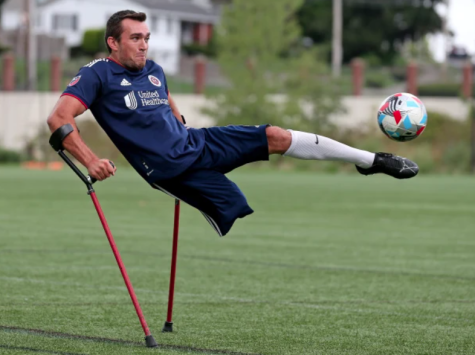
“[Volunteering] definitely opened up my eyes that there’s another world that I was not aware of,” she said.
Similarly, Porcayo felt a weight lifted from his shoulders when he met other players that were like him.
“It’s something very nice because you feel like you’re not alone anymore,” he said. “You understand how there’s still possibilities of other things that you can do. Whether you have two legs or you don’t.”
There are so many ways to support athletes with disabilities, and one of the best ways is to volunteer, like what both Koo of E-Sports and Fleschner of the Green Giants talked about. See the infographic in this story to find ways to get involved. This makes a big difference in the lives of the athletes.
Above all, the world needs to begin to appreciate the accomplishments of athletes with disabilities and help to spread awareness, so that more people with disabilities can find a way to bring sports into their lives.
Sports are one of the most important forms of human interaction, with camaraderie and competition. They should be spread to as many people as possible. All of the people in this article, relentlessly pursuing this end goal of inclusion and accessibility, are changing the world for the better by helping us all play.




